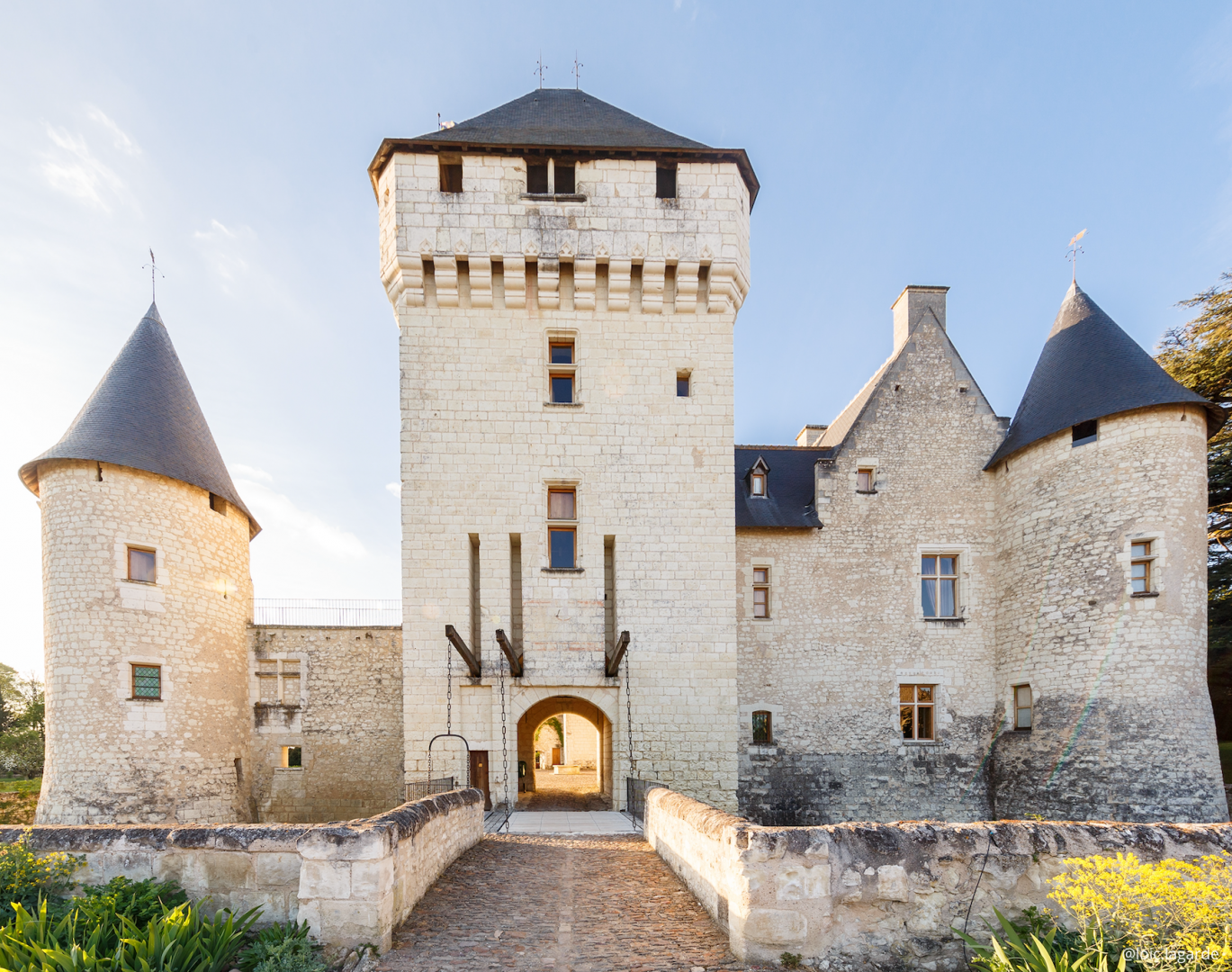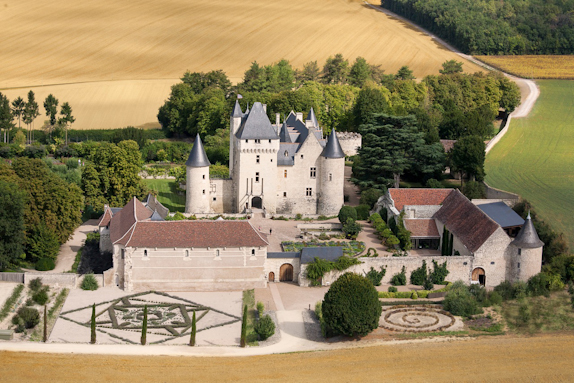Castle
History
THE HISTORY OF THE CHATEAU DU RIVAU
One of the greatest and oldest Loire Valley castle
The history of the Château du Rivau is closely linked to the illustrious de Beauvau family, related to the Counts of Anjou. From the 11th century they had the privilege of paying homage to their suzerain, sword at side, standing, hat on head. In the 13th century, the Beauvau family entered the service of the Kings of France. They became part of the royal family through the marriage of Isabeau de Beauvau to Jean II de Bourbon in 1454. Great servants of the kings, many Beauvau gave their lives for the kingdom.
Built in 1420, the Rivau was given as a dowry by Anne de Fontenay to Pierre de Beauvau when they married in 1438. In 1442, Pierre de Beauvau, First Chamberlain to King Charles VII, obtained permission to fortify his castle. Pierre de Beauvau died in the Battle of Castillon, the battle that ended the Hundred Years’ War in 1453.
His descendant, François de Beauvau, Captain of the King François 1st, began rebuilding the monumental stables in 1510. These stables provided the royal stallions. François died at the Battle of Romagne, in Italy, in 1524. His successor Gabriel de Beauvau completed these highly innovative buildings around 1550.
During the Grand Siècle, Cardinal de Richelieu spared the Château du Rivau because his sister Françoise was married to Jean de Beauvau, Lord of Le Rivau. Having become Princes of Lorraine, the Beauvau family left Touraine in 1693. Le Rivau remained in the hands of the Beauvau family for 247 years.

Other famous visitors : Joan of Arc and François Rabelais
In 1429, at the end of the Hundred Years War, Joan of Arc made history at the Château Rivau. She and her companions came here to collect their steeds in the stables of le Rivau, before the siege of the city of Orléans. The site was already renowned for the quality of the warhorses bred there.
Humanised by the Renaissance, the Château du Rivau became an important place in Touraine. François Rabelais, the famous humanist born near Chinon, mentioned Le Rivau it in his literature. Indeed, Gargantua, the king of the giants, give it to his captain Tolmère. A fine reward for his victories in the Pichrocoline Wars !
Modern times
In the 18th century, Le Rivau became a Jansenist estate. Then, in 1768, the Marquis Michel-Ange de Castellane, Lord of Villandry, acquired the estate. The castle remained in his family until 1796.
At the beginning of the 20th century, in 1918, the sculptor Alphonse de Moncel de Perrin, who worked on the decor for the Petit Palais in Paris, had the château listed as a Historic Monument. The painter Pierre-Laurent Brenot then lived here from 1960 to 1992. One of his paintings is still on display in the Salle des Dames.
At the end of the 20th century, a magic wand was waved and the Château du Rivau, as if it had escaped from a fairytale… Patricia and Éric Laigneau bought Le Rivau in 1992. They fell in love with the site and restored it to its former glory. They succeeded in reuniting the outbuildings with the rest of the estate and renovating them in 1997. The Renaissance Royal Stables were classified as Historic Monuments in 1999. The remarkable gardens of Le Rivau were conceived and designed from 1994 onwards.

